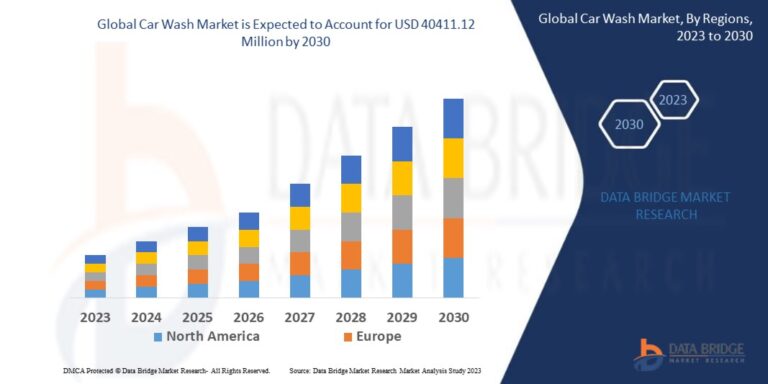Introduction
The global car wash industry is accelerating into a new era of growth and innovation, currently valued at $34.8 billion in 2024 and projected to reach $52.1 billion by 2030, expanding at a healthy 5.9% CAGR. This dynamic market is being transformed by technological advancements, environmental concerns, and changing consumer preferences that are redefining vehicle cleaning standards. From waterless solutions to subscription-based services, modern car wash operations are evolving far beyond their traditional roots to meet the demands of today’s environmentally-conscious and time-pressed consumers.
As vehicle ownership continues to rise globally and urban populations grow, the car wash industry presents compelling opportunities for investors, entrepreneurs, and established operators alike. This comprehensive analysis explores the sector’s evolution, current trends, operational challenges, market segmentation, and the key factors propelling its expansion in an increasingly competitive landscape.
Source: https://www.databridgemarketresearch.com/reports/global-car-wash-market
The Evolution of Car Wash Services
1. Manual Washing Era (Pre-1950s)
- Labor-intensive hand washing dominated
- Local service stations offered basic cleaning
- Limited standardization in techniques
- No specialized equipment or chemicals
2. Mechanical Revolution (1950s-1980s)
- First automatic wash systems introduced
- Tunnel wash concepts gained popularity
- Brush-based systems became industry standard
- Self-service bays emerged as affordable alternative
3. Technology Integration (1990s-2010s)
- Touchless systems reduced vehicle damage risks
- Payment automation through tokens and cards
- Water recycling systems addressed environmental concerns
- Loyalty programs began reshaping customer retention
4. Smart Wash Era (2020s-Present)
- AI-powered wash optimization
- Mobile app integration and cashless payments
- Waterless and eco-friendly formulations
- Subscription-based membership models
- Advanced drying systems reducing water spots
Current Market Trends
1. Water Conservation Technologies
- 90% water recovery systems becoming standard
- Waterless wash products gaining mainstream acceptance
- Drought-prone regions mandating recycling systems
- Average facility now using 40% less water than 2010
2. Contactless Service Models
- App-based scheduling and payments
- License plate recognition for loyalty members
- Fully automated exterior-only options
- Reduced staffing requirements
3. Premium Detailing Services
- Ceramic coating applications
- Paint correction and scratch removal
- Interior sanitization treatments
- 30% higher margins than basic washes
4. Electric Vehicle Specialization
- pH-neutral cleaning solutions
- Battery compartment cleaning
- Charging station partnerships
- Educating staff on EV-specific needs
5. Sustainability Initiatives
- Biodegradable cleaning chemicals
- Solar-powered facilities
- Wastewater treatment systems
- LEED-certified construction
Key Market Challenges
1. Real Estate Pressures
- Urban land scarcity increasing costs
- Zoning restrictions in residential areas
- Parking space requirements
- Competition from alternative land uses
2. Labor Shortages
- 25% industry turnover rate
- Seasonal demand fluctuations
- Technical skills gap for advanced systems
- Rising wage expectations
3. Equipment Costs
- Advanced systems requiring $500k+ investments
- Technology obsolescence risk
- Specialized maintenance requirements
- Energy consumption concerns
4. Weather Dependencies
- 40% revenue fluctuations seasonally
- Climate change impacting predictable patterns
- Regional water use restrictions
- Winter salt removal demands
5. Competitive Differentiation
- Proliferation of discount operators
- Gas station/convenience store competition
- Mobile detailing services
- DIY home washing alternatives
Market Scope and Segmentation
By Wash Type:
- Tunnel/Conveyor (42% market share)
- Self-Service (28%)
- Hand Wash/Detail (20%)
- Mobile Services (10%)
By Service Level:
- Basic Exterior ($5-$15 range)
- Full Service ($15-$30)
- Premium/Detailing ($30-$100+)
By Payment Model:
- Single Wash (55%)
- Membership/Subscription (30%)
- Fleet Accounts (15%)
By Region:
- North America (48% revenue share)
- Europe (30%)
- Asia-Pacific (15%, fastest growing)
- Latin America (5%)
- Middle East/Africa (2%)
Market Size and Growth Drivers
Projected expansion to $52.1 billion by 2030 is fueled by:
1. Rising Vehicle Parc
- Global passenger vehicles exceeding 1.5 billion
- Increased multiple-car households
- Fleet vehicle growth (ride-sharing, rentals)
2. Urbanization Trends
- 68% world population in cities by 2050
- Limited home washing options
- Higher disposable incomes
3. Technology Adoption
- Automated systems improving throughput
- CRM software enhancing retention
- Predictive maintenance reducing downtime
4. Environmental Regulations
- Stormwater runoff restrictions
- Water use limitations
- Chemical disposal requirements
5. Consumer Behavior Shifts
- Value of time over money
- Demand for eco-friendly options
- Preference for professional results
Conclusion
The car wash industry is undergoing its most significant transformation since automation first revolutionized the sector in the mid-20th century. Three key developments will shape its future trajectory:
- Consolidation and Branding – The emergence of national chains with standardized premium services will continue, squeezing out independent operators who fail to specialize or automate.
- Water Innovation – Alternative cleaning methods including steam, nano-technologies, and advanced water recycling will become industry standards rather than differentiators.
- Vehicle-as-a-Service Integration – Partnerships with car subscription services, dealerships, and fleet operators will create stable recurring revenue streams.
For operators, success will require balancing technology investments with customer experience enhancements, while navigating an increasingly complex regulatory environment. The coming decade promises to separate industry leaders from laggards as consumer expectations continue rising and environmental pressures intensify. Those who can deliver consistent, convenient, and sustainable cleaning solutions will capture disproportionate value in this essential but evolving market.


